
Queen Elizabeth II:
The most recognizable person in the world
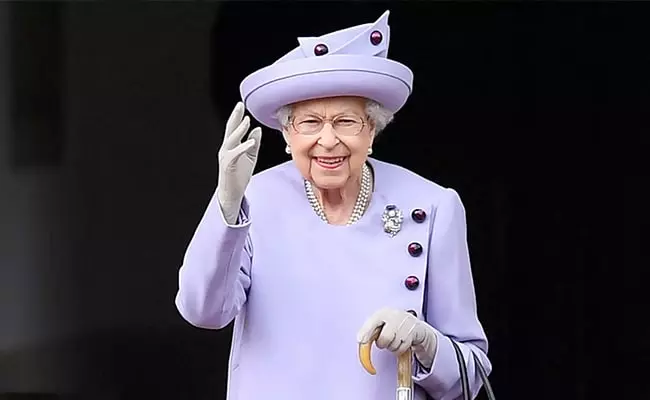
Via Google
One of the most known faces in history, Queen Elizabeth II has been featured in media for more than seven decades.
During her rule, color photography became widely used, television became commercialized, and the internet became widely used. She was painted, photographed, and vandalized. silk-screened onto T-shirts, cast in iron, struck on coins, and fired onto plates. Even a Barbie doll with her resemblance exists.
Buzzfun looks at some of the classic and contentious, official and unauthorized photos that helped make Elizabeth II the cultural icon she is today.
In the palm of your hand
One of the five indisputable portraits of the Queen has been viewed by anyone who has ever paid for something in the UK with coins.
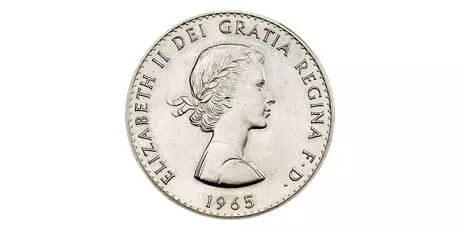
Via Google
2 Years on the throne
Designed by Mary Gillick, 1953
The Queen was 26 years old having just ascended the throne. The design is based on a portrait by the royal photographer Dorothy Wilding.
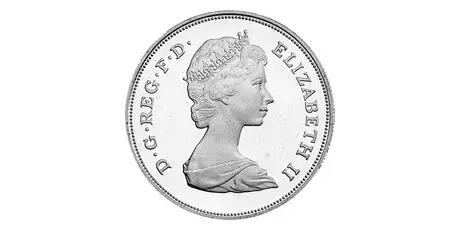
Via Google
16 Years on the throne
Designed by Arnold Machin, 1968
The second portrait of the Queen was introduced in 1971 when all the coins were replaced because of Decimalisation. It was designed by Arnold Machin (pronounced May-chin). You can see he has replaced the wreath with a tiara but what other changes can you see? How does the Queen look different?
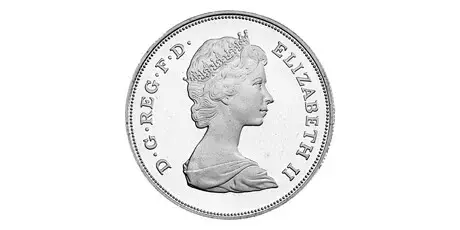
Via Google
33 Years on the throne
Designed by Raphael Maclouf, 1985
The third portrait of the Queen was designed in 1985 by Raphael Maclouf (pronounced Mac-loof). He shows the Queen with the royal diadem which she wears on her way to and from the State Opening of Parliament, and includes a necklace and earrings.
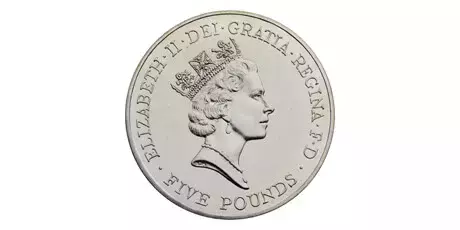
Via Google
46 Years on the throne
Designed by Ian Rank Broadley, 1998
The fourth portrait of the Queen shows her getting older. It was designed by Ian Rank-Broadley. By 1998 when it was introduced most coins had become smaller, so the portrait fills much of the coins’ surface.
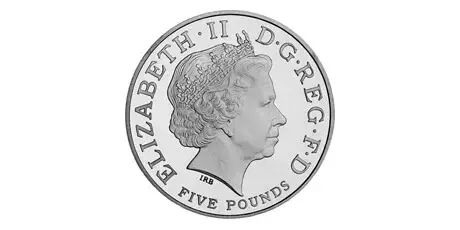
Via Google
63 Years on the throne
Designed by Jody Clark, 2015
The latest portrait designed by Royal Mint engraver Jody Clark in 2015 shows The Queen with the Royal Diamond Diadem Crown, which she wore for her Coronation in 1953. He chose this to link his design to the past as it was featured in the designs by both Raphael Maklouf and Arnold Machin.
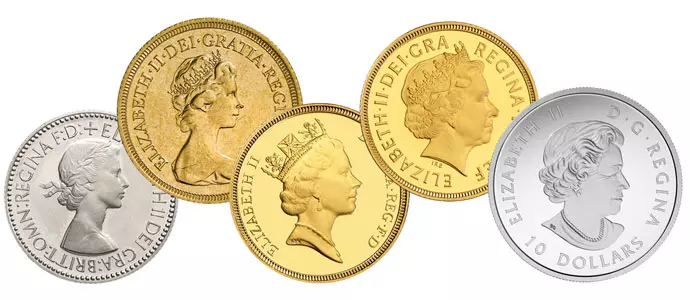
Via Google
Numerous monarchs appeared on UK coins up until the 1970s, but the decimalization of currency pushed the UK into the contemporary era. The guineas and shillings are to be replaced with pounds and pence. Since 1971, the Queen has been depicted on every coin that has been made.
The Royal Mint, which produces all UK coinage, estimates there are 27 billion coins currently in circulation.
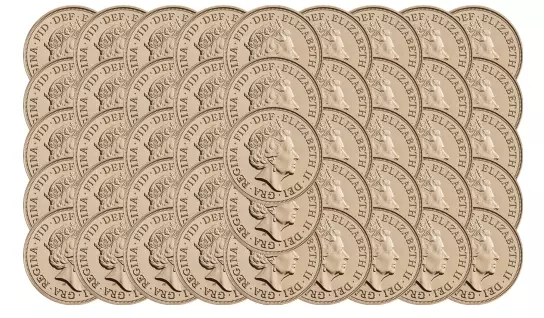
Via CNN
That’s about 400 coins per UK citizen, or at least three coins for every person globally.
“She will have appeared on more coins than any other monarch in history,” said Chris Barker, a historian at the Royal Mint.
And that’s not all.
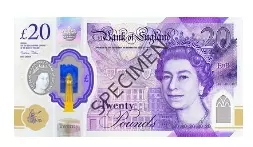
Via Google
The Bank of England estimates more than 30 billion banknotes — or bills — featuring the Queen’s image have been produced during her reign.
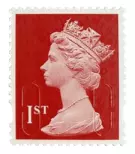
Via Google
Across the Commonwealth, the Queen is head of state for 15 countries.
Her image appears on stamps in Australia, Belize and Canada, for example.
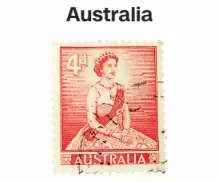
Via Google
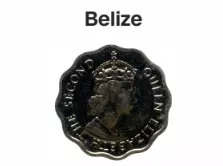
Via Google
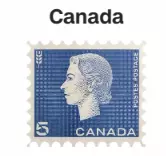
Via Google
According to Barker, updating the king's image on UK coinage typically takes a year and is done to "represent the ageing and change of the monarch."
Over the course of her 70-year reign, Queen Elizabeth II had a profile update about every 16 years. The initial paintings celebrate her youth, but during her reign, painters had to accurately portray the Queen while being mindful of her advanced age.
Jody Clark designed the most recent portrait in 2015, when the Queen was 89.
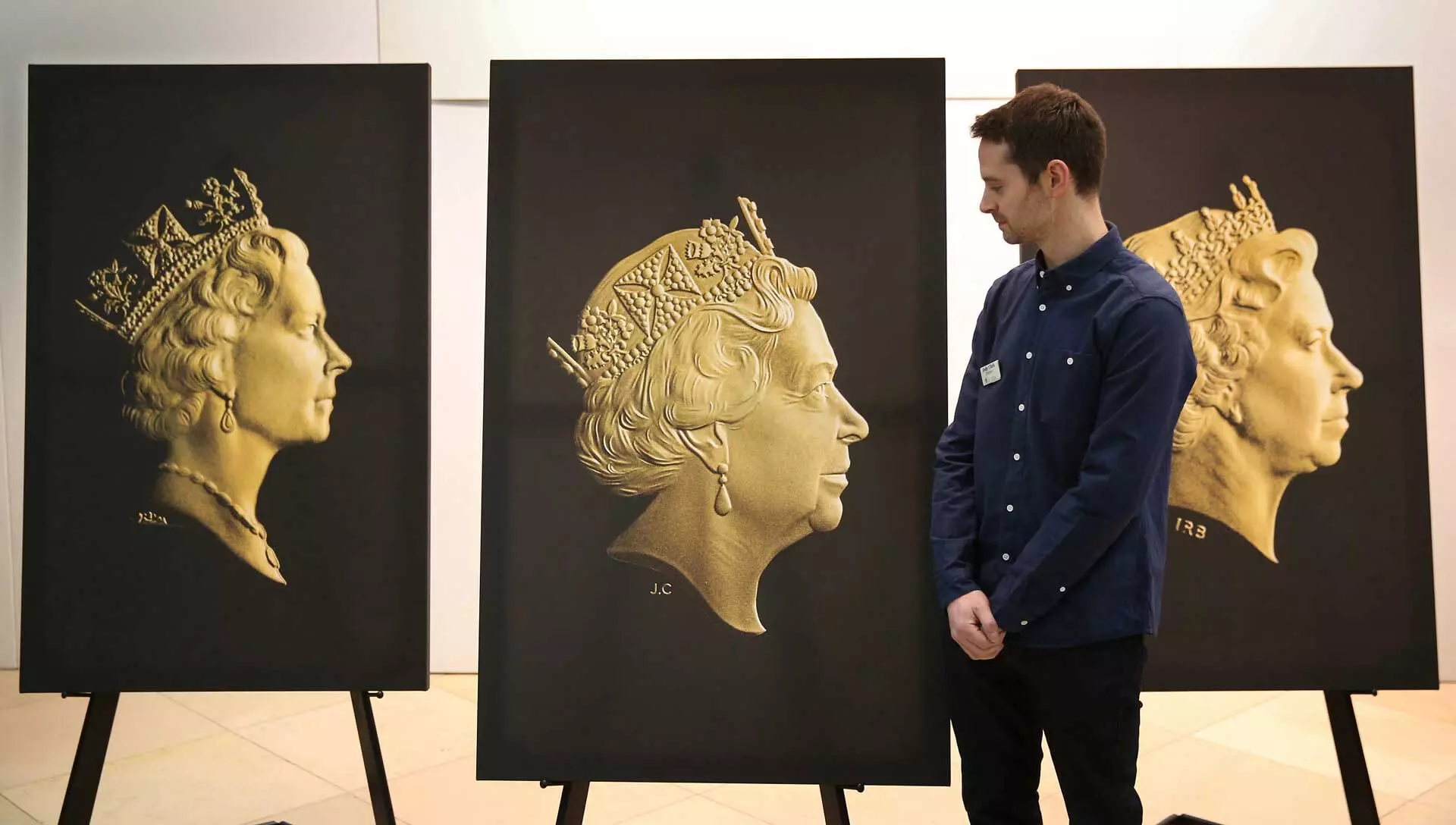
Via Google
Jody Clark standing by his design for the fifth definitive portrait of the Queen on UK coinage, in 2015.
In a secret competition assessed by the Royal Mint Advisory Committee, Clark's portrait was picked among about eight other applications by artists.
The 2015 design shows the Queen with slightly upturned lips — a subtle smile — which makes it unique among the set of five portraits. The artist also had the freedom to choose the jewelry and headwear, or even none at all if he wanted.
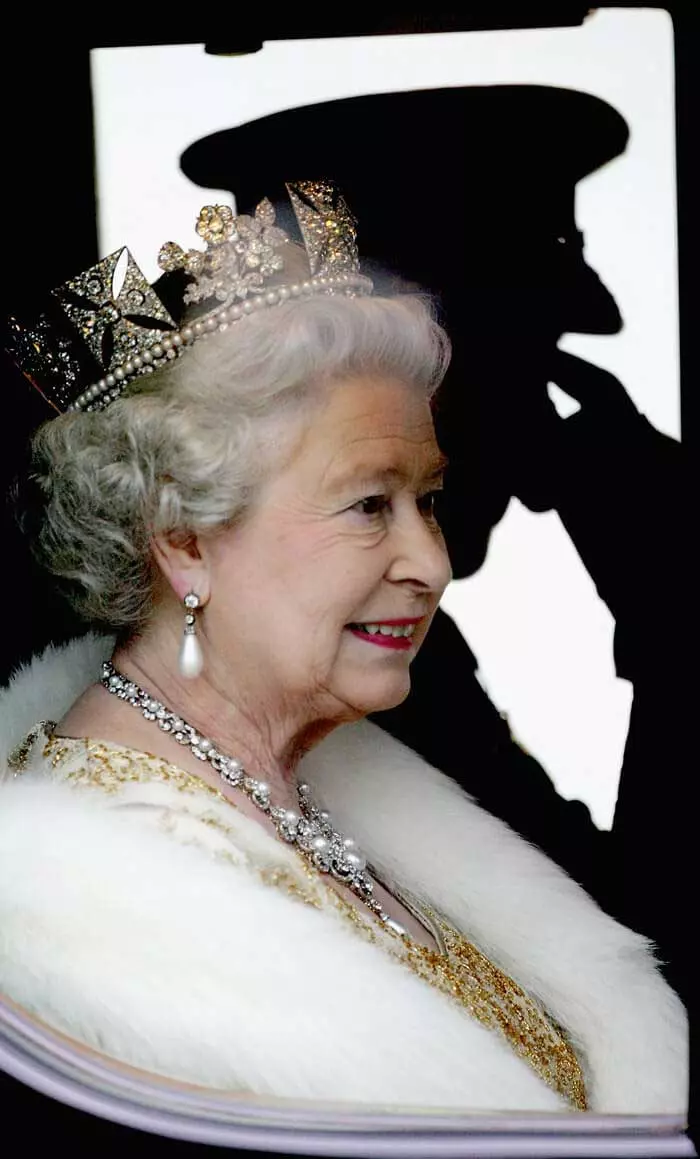 Via Google
Via Google
“They're often given a fairly free rein … guidance-wise, it's pretty much 'Produce a portrait of the queen.' How they go about doing that is entirely up to them,” said Barker.
Mary Gillick, designer of the 1953 portrait, placed a simple laurel wreath around the monarch’s head. Upon hearing of this millinery decision, the Queen reportedly asked the artist not to make her too Julius Caesar-like, according to Barker.
Clark chose to wear a well-known diamond crown and pearl drop earrings. According to Clark, he decided on the regalia after observing that the Queen frequently wore the same ensemble during the State Opening of Parliament.
“Coinage is very powerful, it says something about a society and a country from which it's from,” said Barker.
Visualizing a 20th century monarch
The Queen, like any major brand, went to great efforts to craft her public image. For each of her more than 200 official portraits, the artist was handpicked and their style approved by Buckingham Palace. The setting, any surrounding objects, her attire and even her stance all contributed to the public’s impression of the person beneath the Crown.
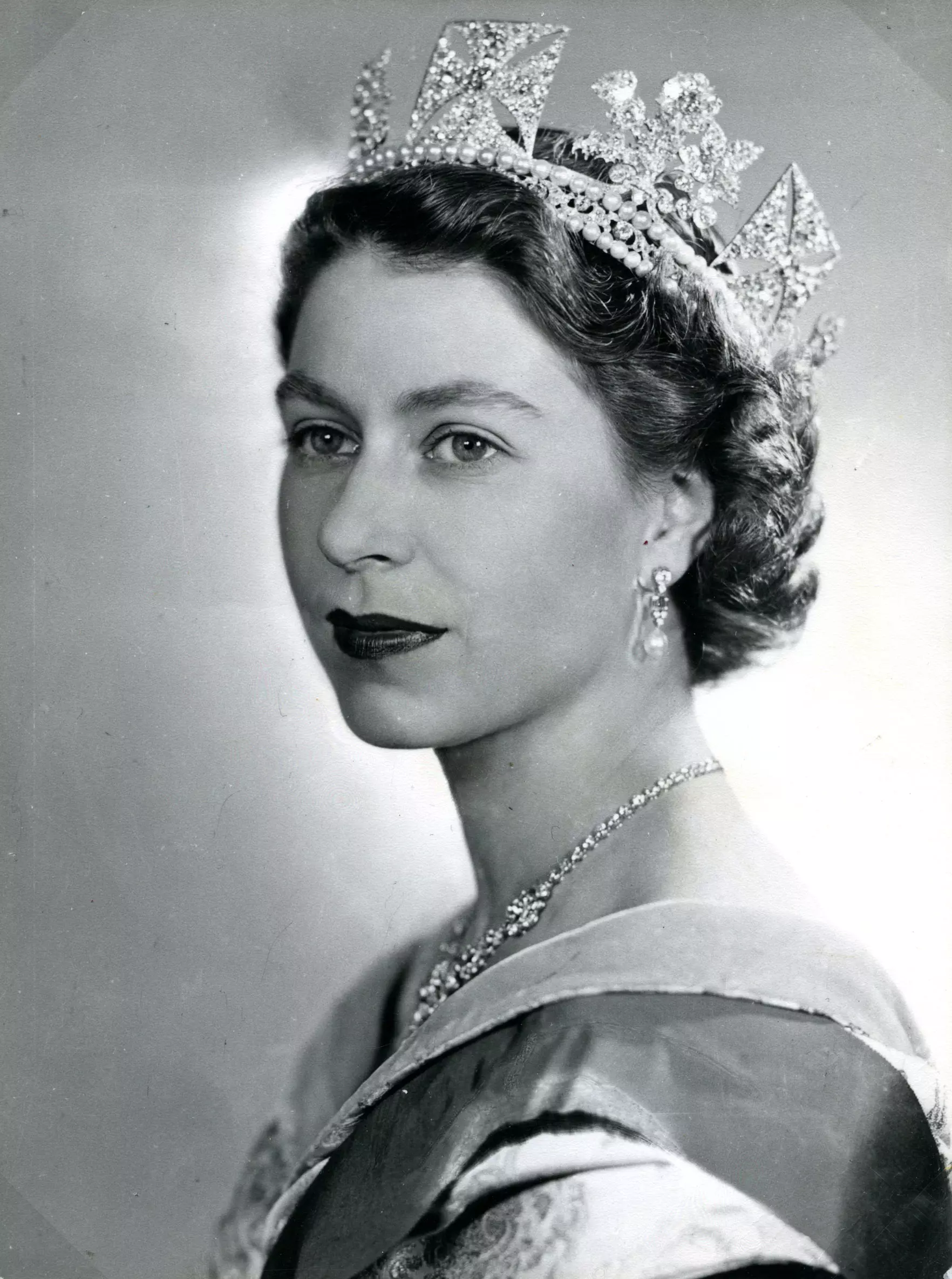
Via Google
Portrait by Dorothy Wilding, 1952
"I am... delighted that she commanded me to make the official portraits on the occasion of her accession to the throne." Dorothy Wilding
The first portraits of the Queen, taken only 20 days into her reign, were by British society photographer Dorothy Wilding. She was a natural choice, having been the official royal photographer (the first woman to hold that role) for the 1937 coronation of the Queen’s father, as well as other royal events.
Wilding was known for her unfussy, modern portraits on a clean white background.
The striking images of the Queen, who was only 25 years old, were the first ones ingrained in our visual culture — so much so that they endured as the basis for her image on postage stamps until 1971.
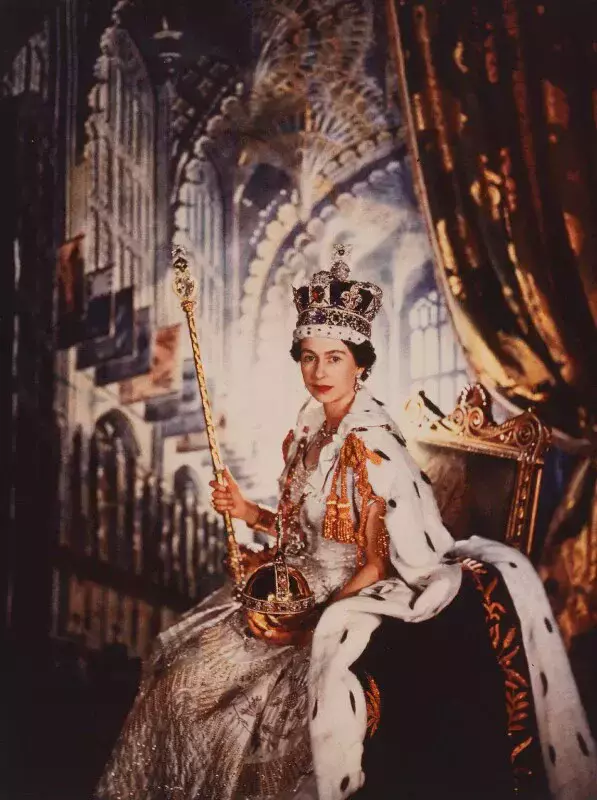
Via Google
The Queen was seated in front of a painted backdrop of Westminster Abbey dressed with thick drape curtains.
The Queen's official coronation portrait was taken by renowned British fashion photographer Cecil Beaton a year later, in 1953. The result was a portrait drenched in epic regal splendor.
Beaton had served as the official court photographer since 1937, so for three decades had recorded life events for the royal family, including the births of Elizabeth’s first two children, Prince Charles and Princess Anne.
The coronation photo was taken at Buckingham Palace on an elaborate set that took two days to prepare.
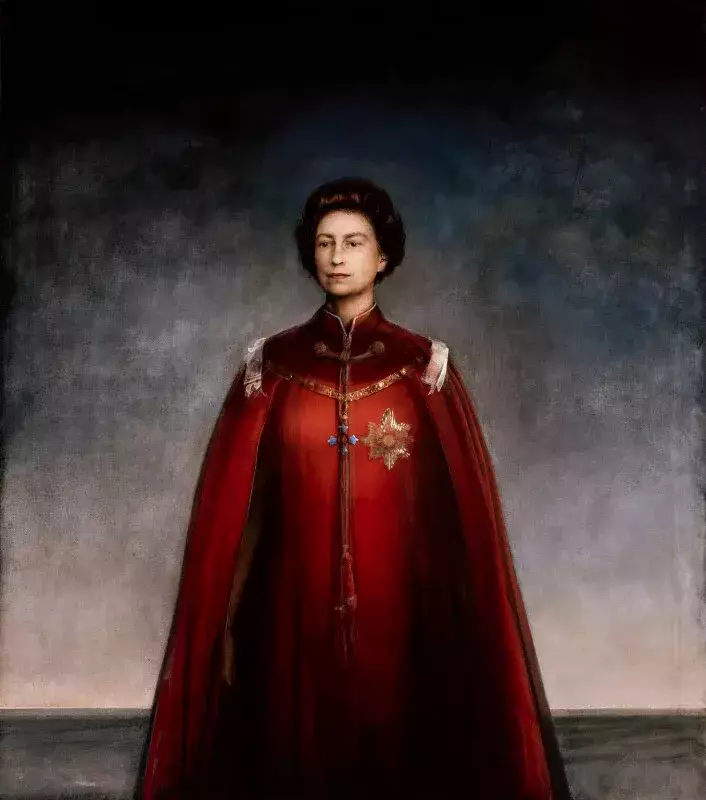 Via Google
Via Google
Queen Elizabeth II Pietro annigoni
"I had made up my mind to show her in solitude, rather thoughtful or severe, profoundly human, and, at the same time, queenly without recourse to crowns or other symbols of regality."
Pietro Annigoni, whose imitation of historical masters like Leonardo da Vinci in his Italian Renaissance style, was given the commission to paint the Queen once more in 1969.
While the first portrait, 15 years prior, portrayed the Queen standing strong and looking to the future, the second showed her with a vacant expression and in isolation.
"It has this kind of monumental power, and the fact that it doesn't have any background or obvious setting makes it quite timeless,” said Broadley.
“The late 60s and 70s were particularly difficult for the royal family. Society was changing rapidly, modernizing. The value systems were being turned on their heads. So her place as head of this society was being questioned increasingly,” added Broadley.
The status quo was being rejected by Britain, which was undergoing a cultural revolution. Rock and roll legend John Lennon, a member of the Beatles, is famous for returning an honorary medal from the Queen in 1969 as a form of protest. Society was changing, from the music and fashion to the repeal of mandatory military duty and even the broad accessibility of the pill contraceptive.
“More people watched the Queen having a barbecue than watched man landing on the moon.”
Robert Hardman on 1969 documentary series, "Royal Family"
In an attempt to open up and connect to the public, the Queen in 1969 allowed cameras into her home to film a documentary series called “Royal Family.”
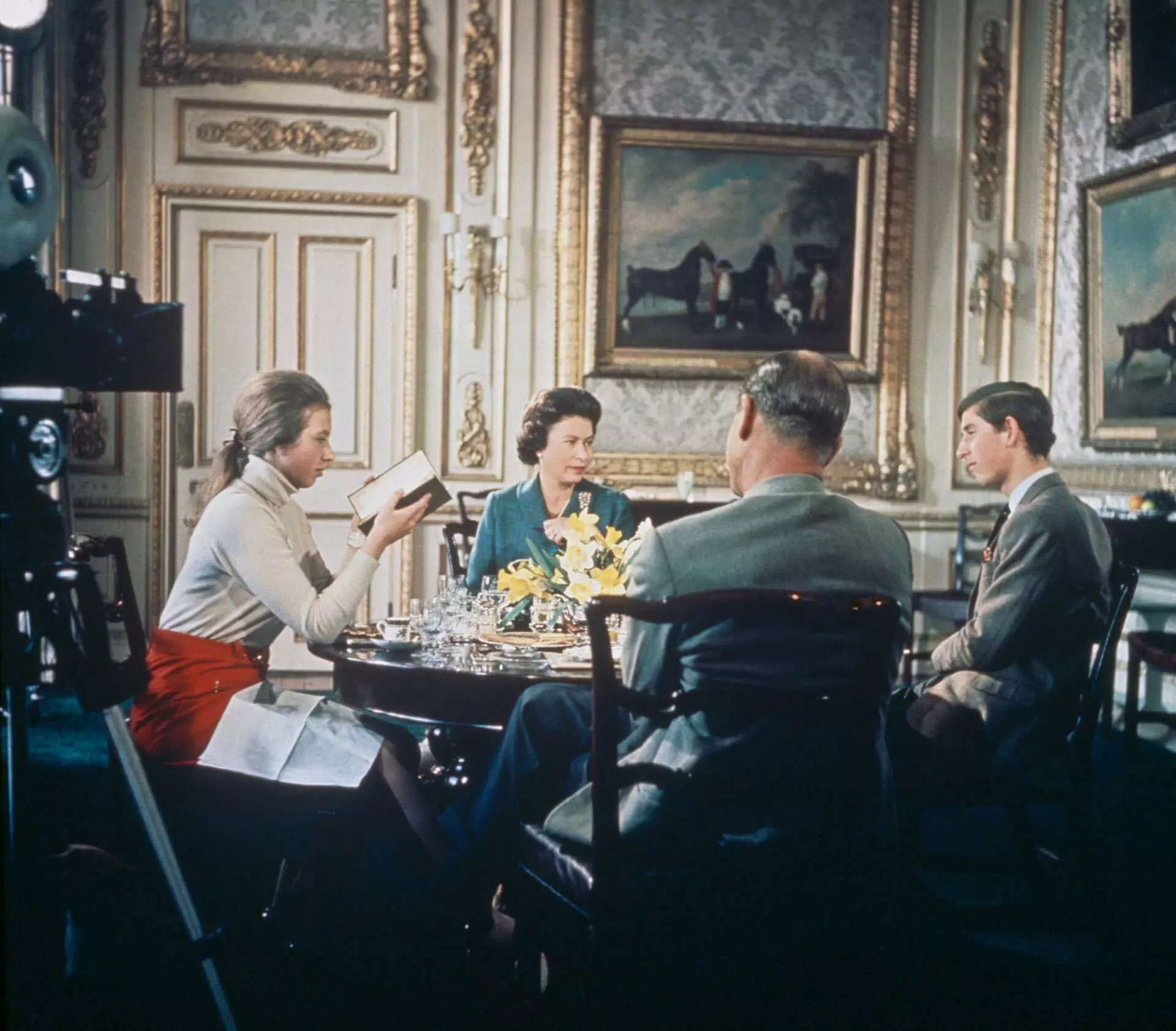 Via Google
Via Google
The Queen has lunch in Windsor Castle with Prince Philip and her two teenage children Princess Anne and Prince Charles. The Queen allowed cameras to follow her and her family for a year for the fly-on-the-wall style documentary.
“They weren't sure whether or not it was a good idea because it would take away that mystique and aura, and make them seem more relatable. And it sort of did and didn't work,” said Broadley.
People got to witness the Queen in daily domestic life for the first time. She was captured on camera going about her daily business, including working from home, going to the store, and having lunch with her family (on a full set of china with floral table arrangements in a gilded drawing room).
“People were just absolutely gobsmacked by this,” said royal biographer Robert Hardman.
The documentary was sold to TV stations around the world, and it had an estimated global audience of 350 million people.
Its popularity secured a new image of the Queen in modern culture — without her wearing a crown and cape.
Remixing an icon
The Queen's Silver Jubilee, which commemorated 25 years in power, was marked by a weekend of celebrations in the summer of 1977. A punk rock band, played their new song "God Save the Queen" outside the Houses of Parliament while sailing a boat down the River Thames in London that same weekend. Some of the boat's party were detained by police as a result.
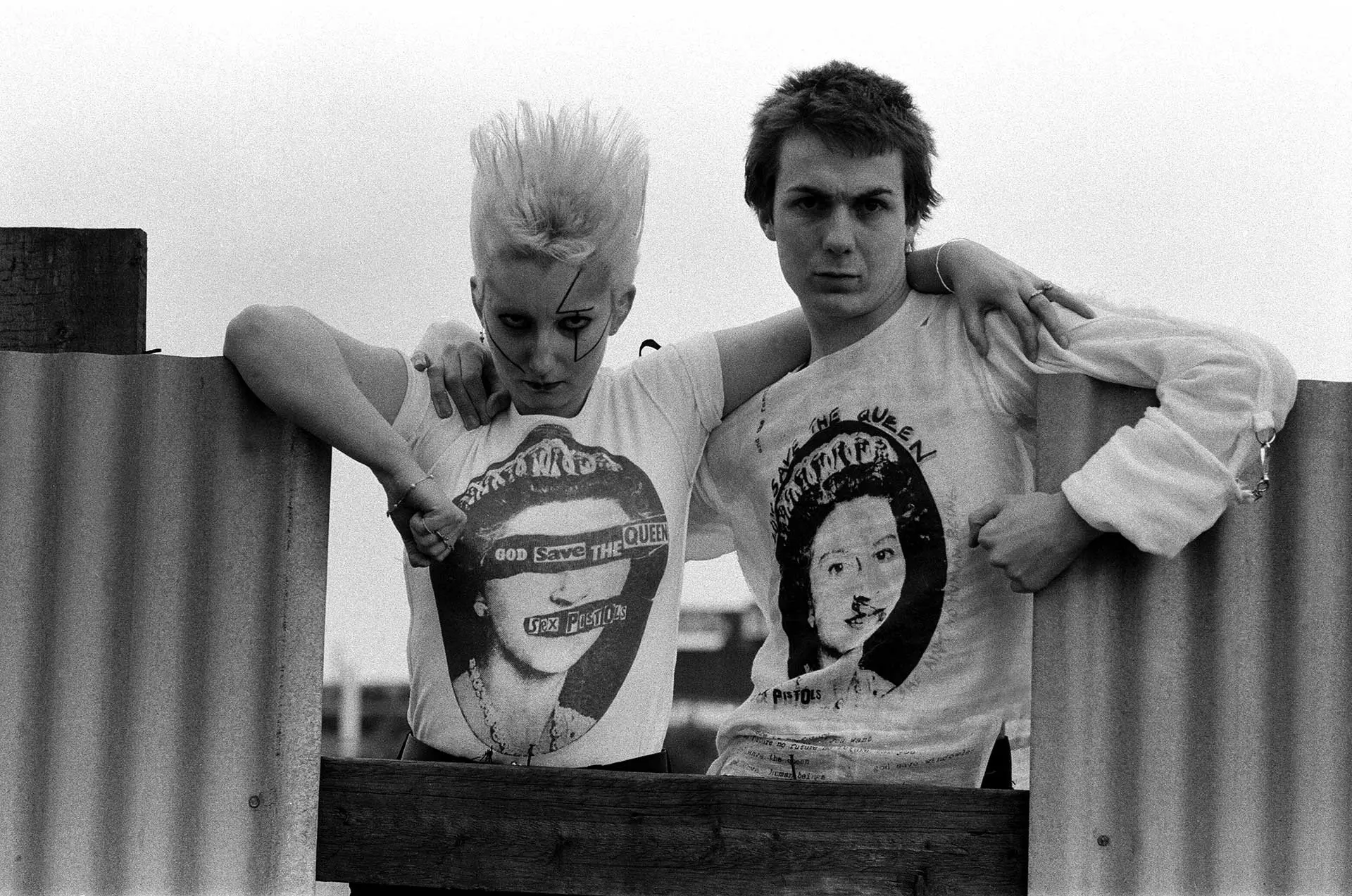 Via Google
Via Google
The song then developed into the anti-establishment punk anthem of the time in England. The monarchy served as a potent emblem of rebellion against the status quo for a new generation that was openly rejecting it.
The Band's distinct punk design, which features ripped paper and typography reminiscent of ransom notes, was created by artist Jamie Reid. He remixed the Silver Jubilee portrait of the Queen with the song title and the band name covering her eyes and mouth for the single cover of "God Save the Queen." Reid also created a cover design with the words "She ain't no human being" next to the Queen's lips and a safety pin through her mouth.
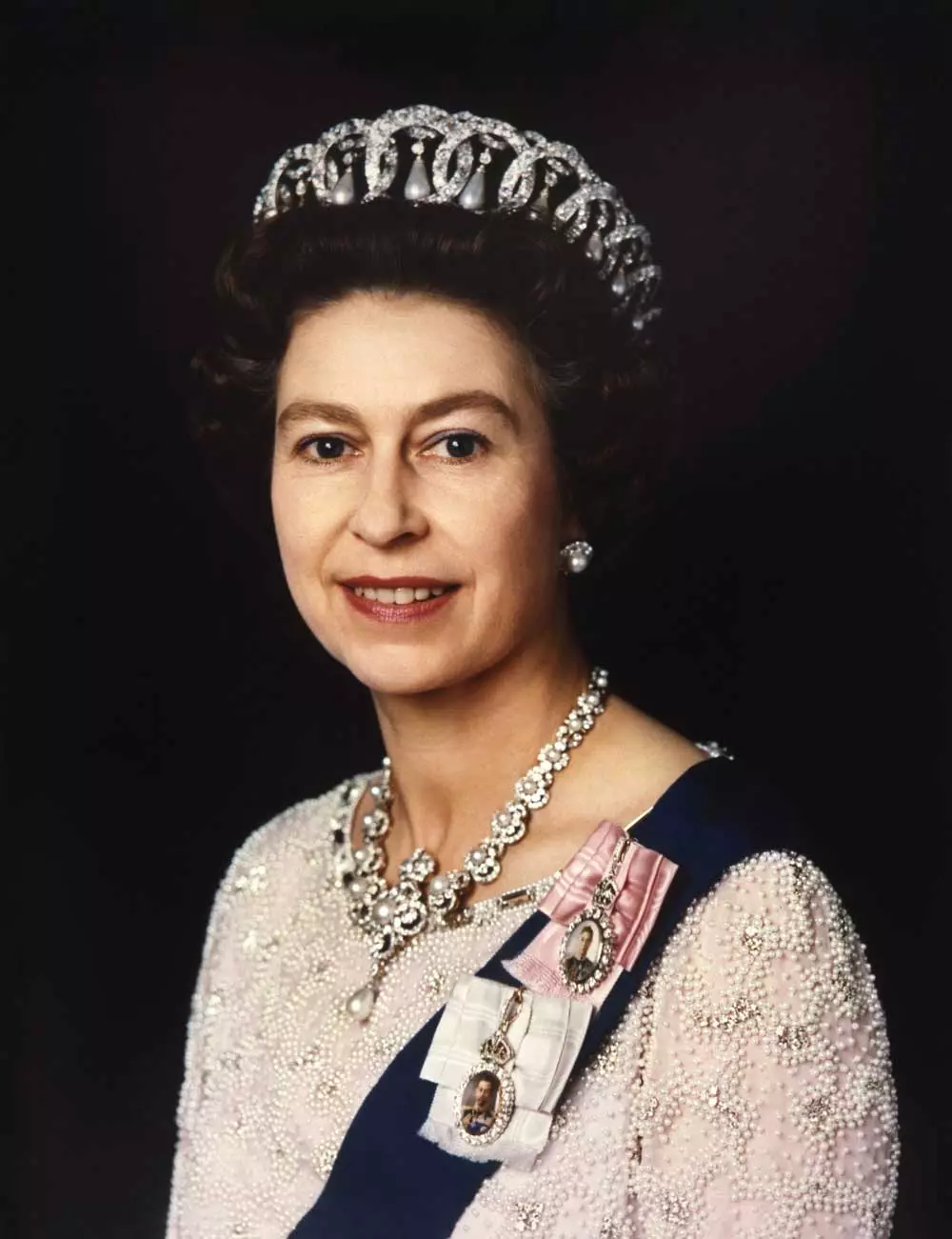
Via Google
This Portrait was used in 1977 as the official photo of Queen's Silver jubilee two years after it was taken. The Queen wears the blue garter riband sash with images of her father and grandfather.
"There was genuine working class backing of these 'anti' monarchy sentiments from 1977 when the Band brought God Save the Queen to No. 1," Reid wrote in response to a reporter's request for an interview for this article.
In the same letter, Reid also talks about the tension between “them 'the privileged' & us 'the underclass.’”
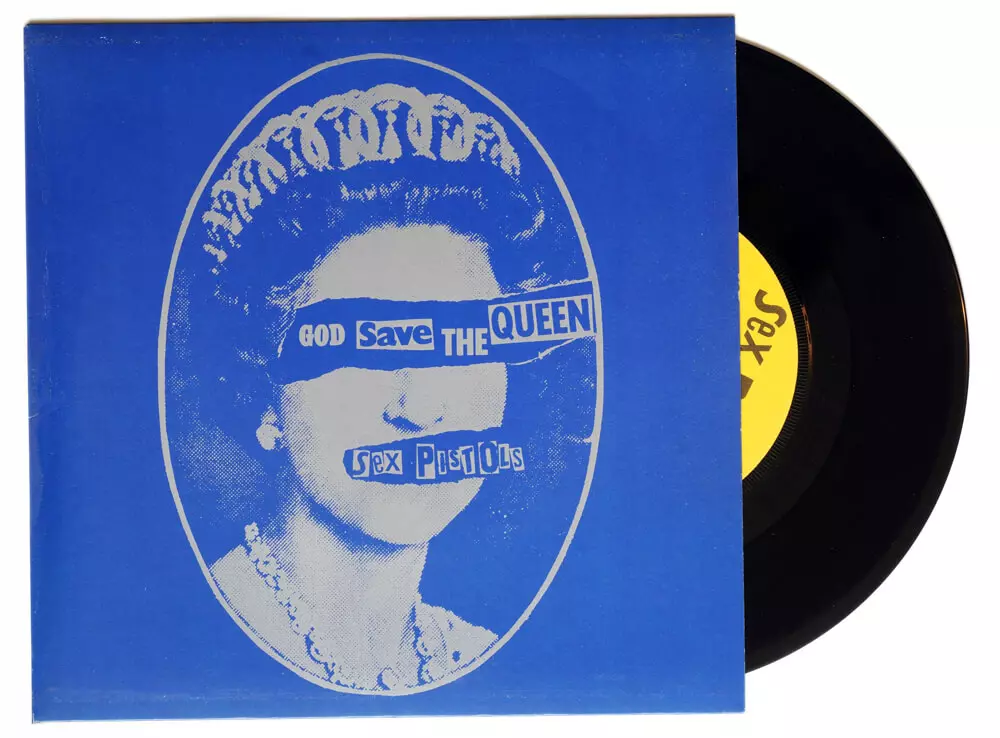 Via Google
Via Google
The song was so popular that it officially made it to No. 2 on the UK music charts, despite it having been banned by commercial radio, the BBC and some record stores.
It's not all capes and crowns
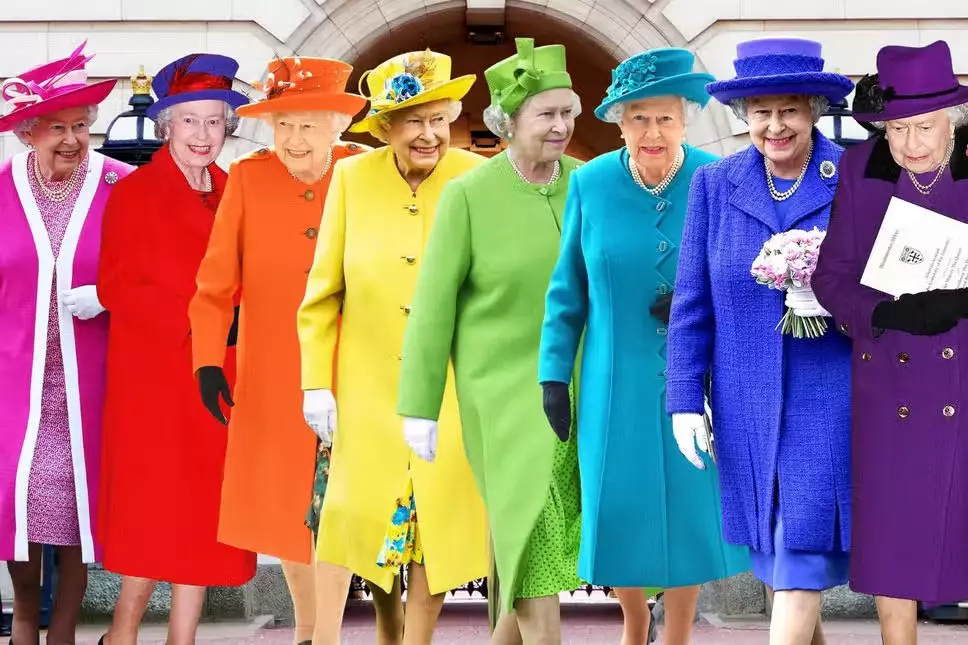 Via Google
Via Google
The Queen's attire was custom-made, and it was typically planned months or even years in advance. While the Crown jewels undoubtedly contributed to the monarch's royal appearance, she was frequently spotted at meet-and-greets in recent years wearing a colourful two-piece suit, complete with a matching coat and hat and gloves.
Anyone seeking to get a quick peek of Queen Elizabeth II might spot her from a distance thanks to her bright, bold hues. The hat protected her from the sun (or more likely, precipitation if you're in the UK) and kept her hair looking elegant despite the wind. For comfort, gloves and low-heeled heels were chosen.
The Queen was also known to have a bit of fun with her image.
The royal agreed to appear with James Bond in a scene-stealing moment during the opening ceremony of the London 2012 Olympic Games, where she appeared to drop out of a helicopter and parachute into the stadium.
These were actors, which was only mildly disappointing. However, the crowd erupted in cheers as the genuine Queen, who was 86 at the time, entered the stadium to take her place while maintaining a straight face and flashing a quick smile of knowledge.
 Via Getty Images
Via Getty Images
For the opening ceremony of the London 2012 Olympic Games, the Queen and James Bond seemingly jump out of a helicopter and parachute into the Olympic stadium.
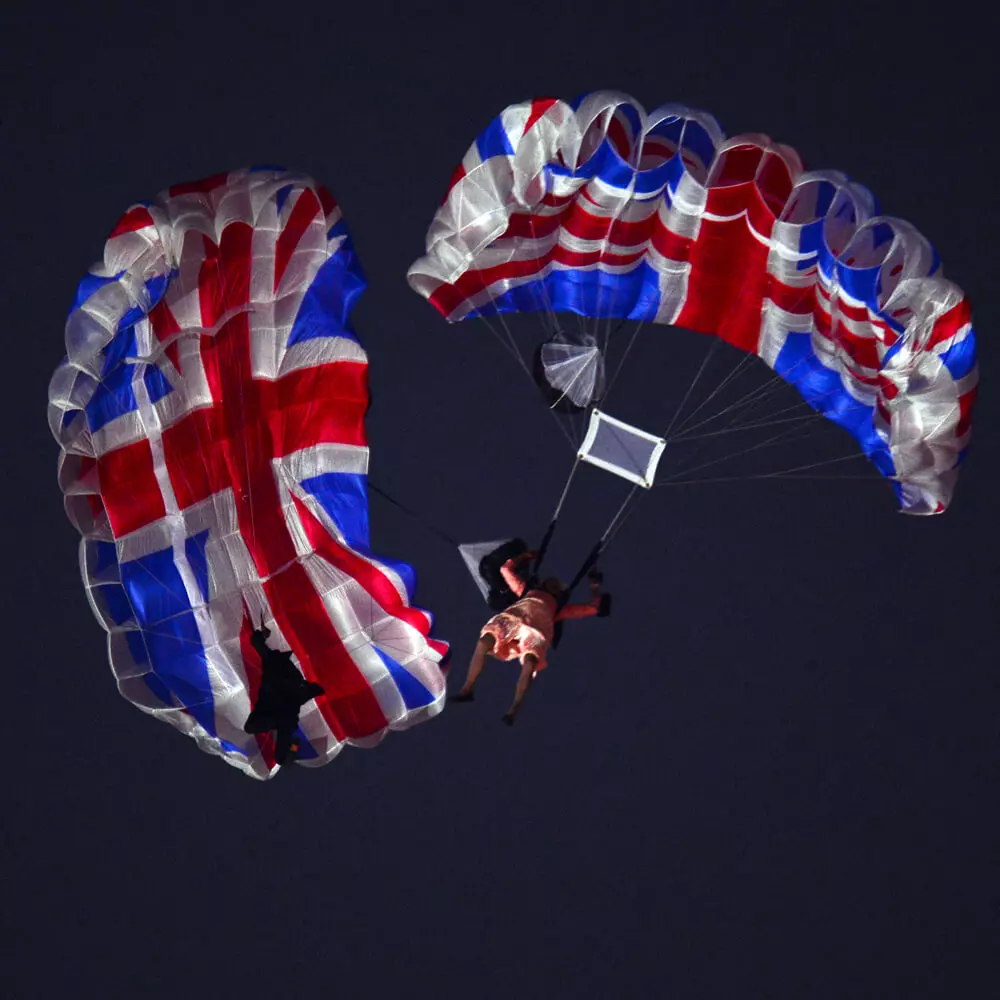
Via Google
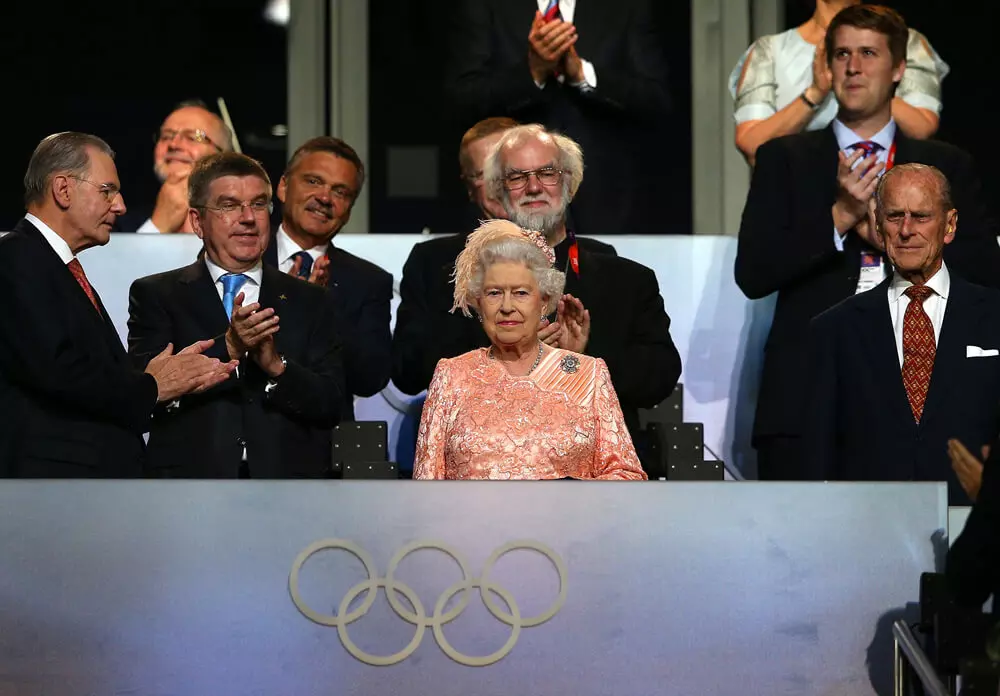
Via Google
The Queen in the Olympic Stadium amidst applause.
Beyond an icon
In her sunset years, the Queen was willing to let unconventional portraits reveal more of her as a person.
Lucian Freud was one of the most established figurative painters in Britain. His warts-and-all portraits of friends, family and himself were the result of months-long sittings at his studio.
When Freud painted the Queen it was in a picture conservation studio at St. James Palace, during a limited number of sittings between May 2000 and December 2001 — lightning fast by his standards.
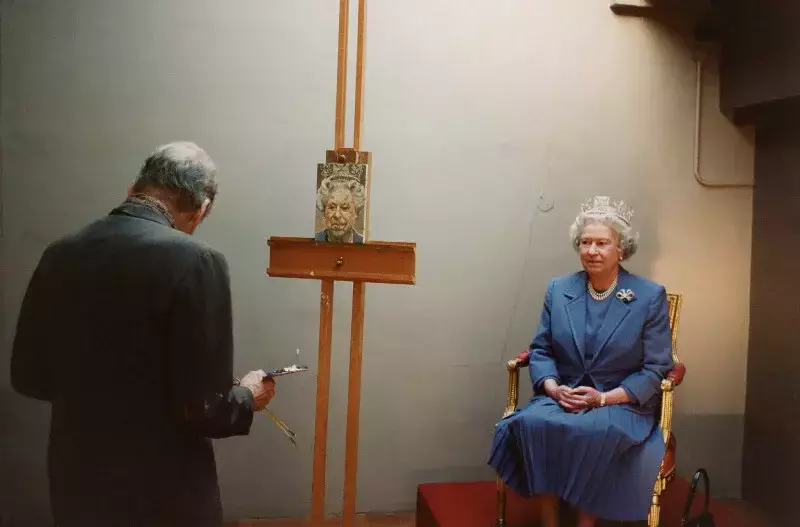 Via Google
Via Google
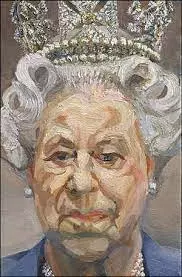
Via Google
On a tiny canvas, Freud made a tight crop of the Queen’s head that filled the entire space with thick, fleshy brush strokes.
Later he had the canvas extended to add a diamond crown, perhaps to make the Queen more “recognizable,” according to the Royal Collection Trust, but the overall effect of his work is still laid bare.
“You probably think I’m going incredibly slowly, but in fact I’m going at ninety miles an hour, and if I go any faster the car might overturn.” Lucian Freud
In 2012, artist Chris Levine released a photograph of the Queen with her eyes shut, a serendipitous outtake from a sitting with the Queen eight years earlier.
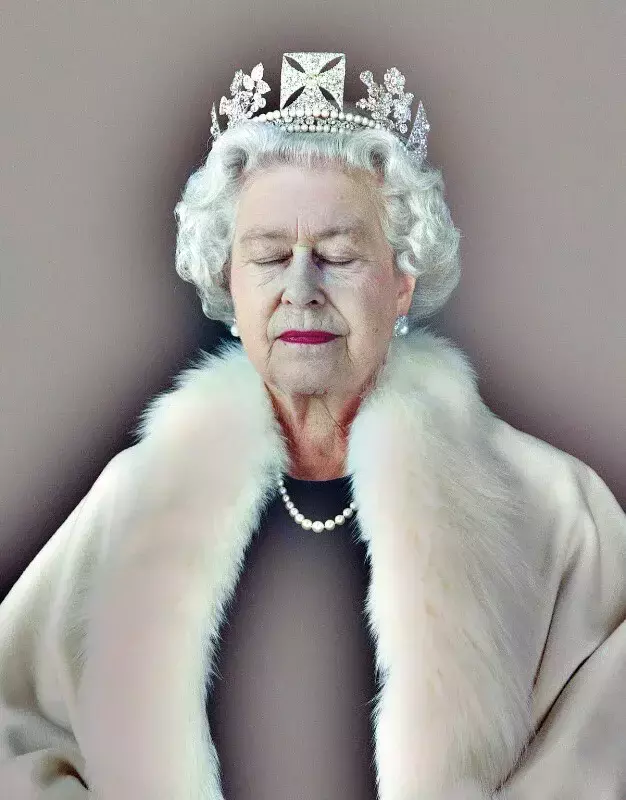
Via Google
"If my work is about anything, it's about just creating moments of stillness and meditative refuge." Chris Levene
Levine and holographer Rob Munday received a contract from the island of Jersey to create a picture to commemorate its 800-year commitment to the Crown. A hologram of the Queen gazing through the lens, dubbed "Equanimity," went on exhibit at the Jersey Heritage archive in 2004 and was chosen as the official photograph.
The 3D portrait was an attempt to give Queen's body of work a more contemporary visual language. Levine remarked, "I wanted to give it some kind of evolutionary step.
“I was very conscious of Her Majesty's breathing, so as the camera took the time to do a pass, I was standing next to her with the shutter control and timing it, so that we would tune into her rhythm of breathing,” Levine added.
"I declare before you all that my whole life, whether it be long or short, shall be devoted to your service."
Queen Elizabeth II in a speech to the Commonwealth in 1947
Queen Elizabeth II's reign coincided with the rise of mass media and ease of travel, which enabled her to visit more than 100 countries. She met 12 serving US Presidents and was the monarch for 15 UK Prime Ministers.
Hardman accompanied the Queen on a 2010 trip to the United Arab Emirates, when he says he noticed a 1979 picture of the Queen and founding father of the nation, Sheikh Zayed al Nahyan, on the cover of school history books.
”It would be a bit like George Washington turning up today. This figure from history.” Hardman said.
Broadley said: “Because of the length of her reign, it's allowed her to become the icon that has superseded the success or failure of her reign.”
What made the Queen one of the most recognizable people in the world? Longevity
RECOMMEND ARTICLES

15 Photos Proving That Carefree Dogs Have Mastered The Art Of Relaxation

Taking Birth Control - A Thing You Mustn’t Neglect

10 Animals Who’ve Lost All Sense Of Shame

Wear Lip Tints Based On Your Zodiac Sign

What Fictional Land Do You Belong To? Find Out Here!

12 Of The Most Hilarious Memes To Have Resulted From Among Us

Which Frozen 2 Character Are You?

Actors From The MCU Discuss What It's Really Like To Wear Superhero Costumes!

12 Secrets About Disney Characters That No One Will Ever Told You!

10 Kinds Of Accidentally Invented Foods, Which Ones Have You Eaten?-3
Most Read

Here Are The TV Shows And Movies From The '90s That Will Be Streaming On Disney Plus

20 Outstanding Photographs That Really Impressed Us

What Your "Among Us" Color Says About You

Best Collab Of The Century: BTS And Coldplay For The Song Titled 'My Universe'

Strangeness! Writer's Article Predicts Her Husband's Murder

These 8 OMG Stories From People On The Internet That Will Definitely Make Your Heart Stop!




